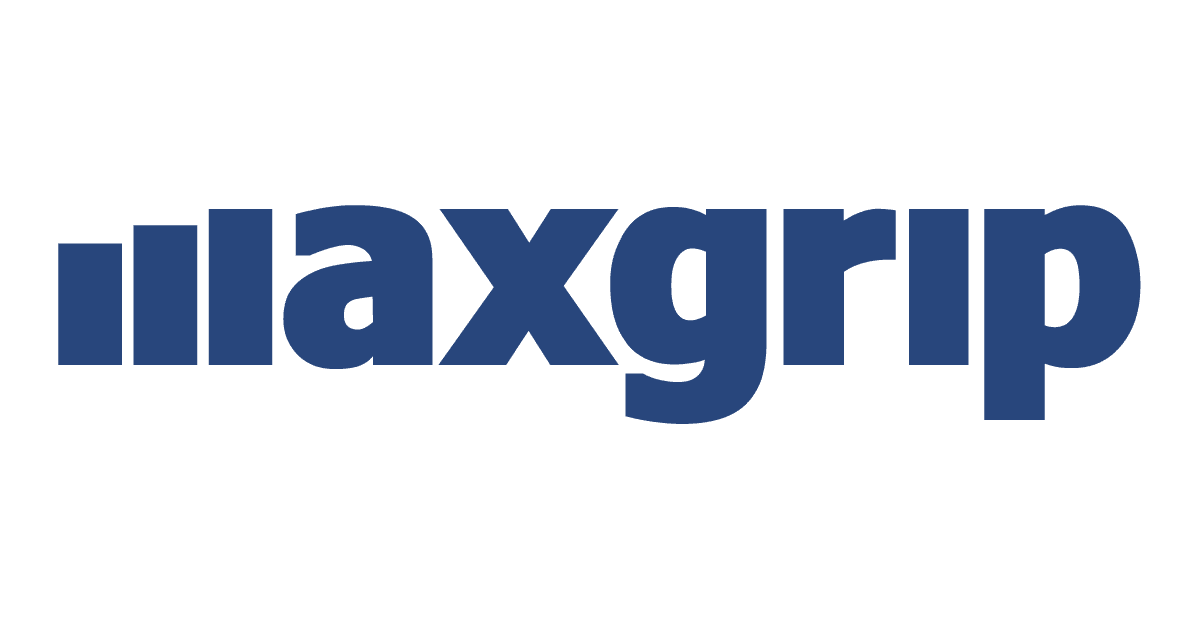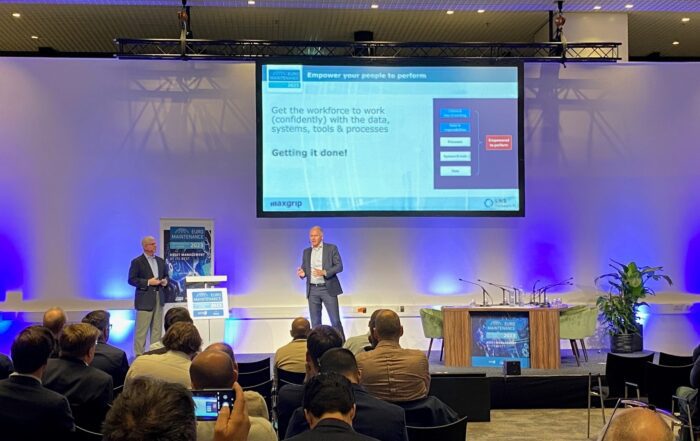This content was originally shared by Katherine Sanchez, Managing Consultant at MaxGrip, in a presentation at Reliable Plant conference.
Managing physical assets and equipment efficiently is crucial for organizations across industries. Enterprise Asset Management (EAM) provides a comprehensive approach to optimize asset quality, utilization, uptime, and costs throughout the entire asset lifecycle. Unlike Computerized Maintenance Management Systems (CMMS) that focus solely on maintenance management, EAM covers the broader spectrum of asset management, from acquisition to disposal. Implementing an effective EAM system brings several benefits that directly impact maintenance operations and contribute to organizational success; the system can significantly increase a maintenance department’s efficiency, reduce downtime and improve cost-effectiveness. We can discern five keys to maximizing the system’s potential and realizing business success: training & standardization, accurate master data, culture & adoption, comprehensive data analysis and experienced guidance.
Key 1: Accurate Master Data
Accurate master data is the foundation of realizing the full potential of an EAM system. One key aspect of accurate master data is ease of use, as it significantly improves the overall utilization of the EAM system. This involves ensuring that data capturing processes are streamlined and user-friendly, allowing maintenance managers and technicians to input and access information seamlessly. Additionally, understanding asset criticality is essential, as it helps prioritize maintenance activities based on the significance of assets to overall operations. Establishing a well-structured asset hierarchy further enhances the organization and accessibility of data, enabling the maintenance team to efficiently manage assets. Correctly grouping preventive maintenance activities based on asset criticality and other factors is critical for reducing downtime and maximizing maintenance effectiveness, as it allows maintenance teams to proactively address potential issues and minimize disruptions to operations.
Key 2: Data Analysis
Data analysis is another key factor in making the best use of the system. However, the effectiveness of data analysis relies heavily on the quality of the data being captured. The adage “Bad in = Bad out” holds true in this context, emphasizing the importance of clean data capturing processes including the use of mandatory fields and using conventions strictly. Accurate and reliable data is crucial for making informed business decisions and driving strategic initiatives. Effective data management and analytics enable the maintenance team to translate raw data into actionable insights that can shape business strategies. By leveraging these insights, organizations can optimize maintenance operations, allocate resources effectively, and align their asset management practices with overall business objectives. Data-driven decision-making not only enhances maintenance and reliability but also contributes to the overall success and competitiveness of the organization.
Key 3: Training and Standardization
Training and standardization are critical components in maximizing the benefits of the EAM system. By providing training on the proper use of the EAM system, maintenance managers can ensure that their teams are equipped with the necessary skills and knowledge to utilize the system effectively and in a uniform way. Regular training sessions should be conducted to refresh and reinforce these skills, enabling maintenance personnel to stay on top of the system’s functionalities and getting the most out of its usage. Furthermore, the implementation of standardized job plans, routes, and inspections streamlines maintenance workflows. This promotes consistency and efficiency across the organization.
In addition to optimizing maintenance operations, training and standardization also contribute to maintaining a safe working environment. By ensuring the enforcement of health and safety regulations, such as lockout and tagout procedures and the right registration in the EAM system, organizations mitigate risks. Moreover, by capturing data related to regulatory compliance and inspections, the EAM system provides valuable documentation that can support audits and demonstrate adherence to industry regulations. Overall, training and standardization play a vital role in optimizing EAM utilization and fostering a culture of safety and compliance within maintenance operations.
Key 4: Culture and Adoption
While the technical aspects of the EAM system are important, it is the people who play a pivotal role in maximizing its benefits. To unlock the full potential of the EAM system, organizations must work towards changing the perception of EAM as a “Blackbox” by promoting transparency, understanding and active involvement among employees. Defined roles, responsibilities and boundaries help establish clarity and accountability within the organization. Addressing workflow and usage issues ensures that the EAM system is aligned with existing processes and workflows, maximizing its integration and effectiveness. Work management Key Performance Indicators (KPIs) provide valuable insights into the usage of the EAM system, helping identify areas for improvement and driving continuous enhancement. It is crucial to identify internal champions who can advocate for the system and inspire others to adopt and embrace it. Celebrating successes and showcasing the positive outcomes of EAM implementation can generate internal buy-in quickly and foster a culture of enthusiasm and engagement. Ultimately, cultivating a culture of adoption and garnering widespread support among employees is essential for extracting the maximum value from the EAM system and achieving long-term success.
Key 5: Experienced Guidance
For most people and businesses change is not easy; changing to a new system is a big leap for many maintenance teams. Therefore, the importance of expert guidance cannot be overstated when it comes to deploying a new EAM system or when wanting to adopt a new way of working to get more out of your current system. Engaging an external expert with domain expertise and experience across various companies and industries brings a fresh perspective to the table. These experts can conduct a thorough assessment of the current utilization of the EAM system and identify improvement opportunities that may have been overlooked internally. By leveraging their knowledge and insights, they can guide organizations towards optimizing their EAM system and processes, ensuring they align with industry best practices and standards.
Moreover, the external expert can act as a coach and provide support to internal champions, helping them navigate challenges and drive successful implementation. Their experience in following up with EAM solutions providers ensures effective communication and collaboration, bridging the gap between the organization and the solution provider. Overall, the expertise and guidance of an external expert play a crucial role in unlocking the full potential of the EAM system, driving continuous improvement, and maximizing its value to the organization.
Conclusion
In conclusion, unlocking the full potential of an Enterprise Asset Management system requires a comprehensive approach that encompasses accurate master data, data analysis, training and standardization, culture and adoption and experienced guidance. By focusing on these five keys, organizations can optimize their maintenance operations, reduce downtime, improve cost-effectiveness, and align their asset management practices with overall business objectives. Accurate master data serves as the foundation for effective EAM utilization, while data analysis enables informed decision-making and strategic initiatives. Training and standardization promote consistency and efficiency, contributing to a safe working environment and compliance with regulations. Cultivating a culture of adoption and garnering widespread support among employees enhances the system’s integration and effectiveness. Finally, engaging an external expert brings valuable insights, guidance, and experience to optimize the EAM system and drive continuous improvement. By embracing these five keys, organizations can unlock the full potential of their EAM system, realize business success and achieve long-term maintenance excellence.
📰 Watch our Recorded Webinar: The Building Blocks to Maintenance Maturity
📰Continue Reading
- Case study: Strategic blueprint and global deployment of Maximo EAM system increases maintenance maturity
- Top five do’s & don’ts for your CMMS/EAM system
- Enterprise Asset Management (EAM) best practices
- The Benefits of Tracking Equipment Downtime
- Strategic EAM Implementation leads to a 75% increase in maintenance data reporting
- Reliability metrics 101: Mean Downtime
Get inspired
An overview of MTTR, how to improve it, and how to use this knowledge to influence your organizations maintenance and reliability strategy.
Join Justin Satink in our "Asset Performance" webinar. Uncover MaxGrip's global assessment insights, benchmark results, and a real-world case study. 26th September, 9 am CT | 4 pm CEST. Don't miss it!
MaxGrip played a large part in the program with two keynotes and five workshops with Waternet, ONE-Dyas, TenneT, Victrex, LNS Research and IFS Ultimo.




